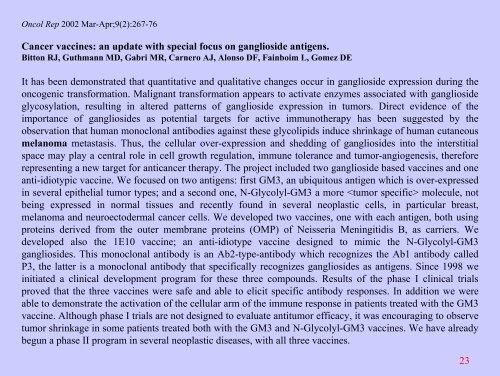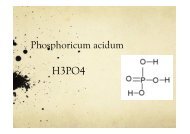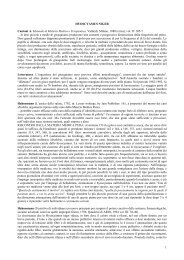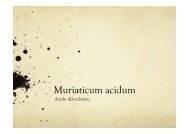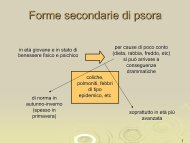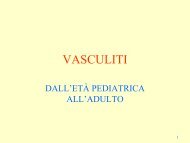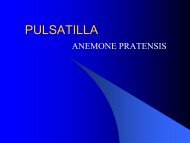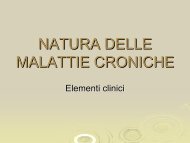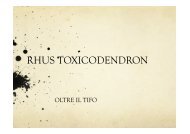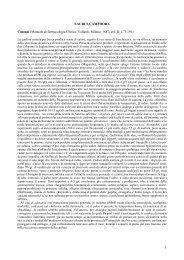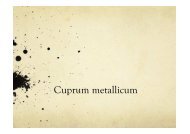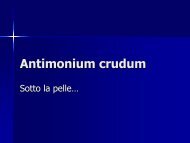omeopatia - OmeoWeb
omeopatia - OmeoWeb
omeopatia - OmeoWeb
Create successful ePaper yourself
Turn your PDF publications into a flip-book with our unique Google optimized e-Paper software.
Oncol Rep 2002 Mar-Apr;9(2):267-76<br />
Cancer vaccines: an update with special focus on ganglioside antigens.<br />
Bitton RJ, Guthmann MD, Gabri MR, Carnero AJ, Alonso DF, Fainboim L, Gomez DE<br />
It has been demonstrated that quantitative and qualitative changes occur in ganglioside expression during the<br />
oncogenic transformation. Malignant transformation appears to activate enzymes associated with ganglioside<br />
glycosylation, resulting in altered patterns of ganglioside expression in tumors. Direct evidence of the<br />
importance of gangliosides as potential targets for active immunotherapy has been suggested by the<br />
observation that human monoclonal antibodies against these glycolipids induce shrinkage of human cutaneous<br />
melanoma metastasis. Thus, the cellular over-expression and shedding of gangliosides into the interstitial<br />
space may play a central role in cell growth regulation, immune tolerance and tumor-angiogenesis, therefore<br />
representing a new target for anticancer therapy. The project included two ganglioside based vaccines and one<br />
anti-idiotypic vaccine. We focused on two antigens: first GM3, an ubiquitous antigen which is over-expressed<br />
in several epithelial tumor types; and a second one, N-Glycolyl-GM3 a more molecule, not<br />
being expressed in normal tissues and recently found in several neoplastic cells, in particular breast,<br />
melanoma and neuroectodermal cancer cells. We developed two vaccines, one with each antigen, both using<br />
proteins derived from the outer membrane proteins (OMP) of Neisseria Meningitidis B, as carriers. We<br />
developed also the 1E10 vaccine; an anti-idiotype vaccine designed to mimic the N-Glycolyl-GM3<br />
gangliosides. This monoclonal antibody is an Ab2-type-antibody which recognizes the Ab1 antibody called<br />
P3, the latter is a monoclonal antibody that specifically recognizes gangliosides as antigens. Since 1998 we<br />
initiated a clinical development program for these three compounds. Results of the phase I clinical trials<br />
proved that the three vaccines were safe and able to elicit specific antibody responses. In addition we were<br />
able to demonstrate the activation of the cellular arm of the immune response in patients treated with the GM3<br />
vaccine. Although phase I trials are not designed to evaluate antitumor efficacy, it was encouraging to observe<br />
tumor shrinkage in some patients treated both with the GM3 and N-Glycolyl-GM3 vaccines. We have already<br />
begun a phase II program in several neoplastic diseases, with all three vaccines.<br />
23


